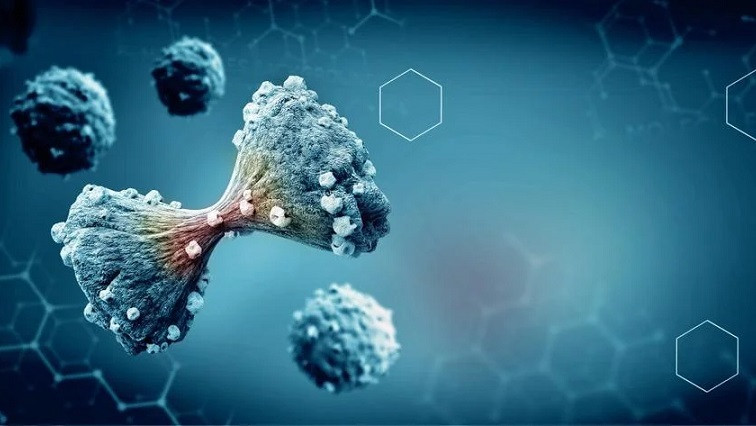How Nanotechnology Improves Cancer Therapy
Nanotechnology enhances chemotherapy and reduces its adverse effects by guiding drugs to selectively target cancer cells. It also guides the surgical resection of tumors with higher levels of accuracy and enhances the efficacy of radiotherapies and other current treatment options. The result is decreased risk to the patient and enhanced survival probabilities.
Researchers are developing novel therapeutics with newly discovered nanoparticles that have novel properties to be leveraged in medical science. While tiny in size, nanoparticles encapsulate small pharmaceutical compounds. The relatively large surface area of nanoparticles allows them to be decorated with ligands, strands of DNA and RNA, peptides, or antibodies. These ‘add-ons’ give the nanoparticle additional functionality that enhances the therapeutic effect or helps direct a nanoparticle to a specific location. As a result, nanoparticles facilitate combination drug delivery, multi-modality treatment, and “theranostic,” action (combined therapeutic and diagnostic). The energy absorption and re-radiation properties of nanoparticles also allows them to improve laser ablation and hyperthermia applications, which disrupt diseased tissue.
Nanoparticle research in oncology is currently progressing rapidly, with several major lines of enquiry emerging such as the development of nanoparticle packages, active pharmaceutical ingredients to facilitate the exploration of a broader range of active ingredients, and the establishment of immunogenic cargo and surface coatings as adjuvants to nanoparticle-mediated therapy, radio- and chemotherapy, and stand-alone therapies.
Below, we discuss the major applications of nanotechnology in oncology.
Delivery of Drugs
The primary use of nanotechnology in oncology is within the delivery of drugs. Much research has shown that nanotechnology has successfully been used to design multiple systems that improve the pharmacokinetics of a pharmaceutical and reduce the related toxicities. These systems limit the adverse events of the drugs and augment a patient’s survival chances. They also allow chemotherapies to be more selective as they help deliver the drugs to the specific tumor tissues. These methods involve the development of nano-sized carriers that encompass and deliver the drug to its target.
There are numerous examples of these types of systems. One recent methodology has been used to increase the efficacy of chemotherapy drugs used to treat bowel cancer. The results of clinical trials suggested that the nanoparticle delivery system could help increase survival rates of bowel cancer, the third most common cancer in the world, by helping the delivery of chemotherapy drugs directly to the diseased organs. In studies with animals, the system was proven to be effective at delivering Capecitabine (CAP) to the diseased cells while bypassing healthy cells. This reduced toxic side effects and enhanced the efficacy of tumor reduction activity.
Recent research has demonstrated the efficacy of nano-sized carriers in delivering alternative, herbal-based therapeutics. Scientists have created a novel targeted therapy to treat triple-negative breast cancer (TNBC) that utilizes nano-carriers to help deliver gambogic acid (GA), a Chinese medicine compound, to specific targets. Studies have shown that the novel methodology was effective at enhancing the anti-cancer effect of GA and limiting damage to healthy tissue. As a result, the use of GA may emerge as a more effective therapeutic option for the treatment of TNBC.
Enhancing Immunotherapy with Nanotechnology
Another encouraging area of nanotechnology in oncology is its use in enhancing immunotherapy. While immunotherapy has already been established as an exciting and potentially highly effective treatment option for various types of cancer, the proportion of patients who respond positively to immunotherapy remains low, with only around 15% of patients demonstrating an objective response rate across indications. This is linked to the multiple immune-evasion methods of the tumor.
To help boost the immune system’s efficacy against cancer, nanotechnology is being leveraged to manage the spatiotemporal control of the immune system. The idea is that naturally, the immune system is spatiotemporally controlled. Therefore, to work effectively, therapies that impact the immune system should also be spatiotemporally controlled. Recent research has demonstrated that nanoparticles and biomaterials allow scientists to control the delivery, pharmacokinetics, and location of immunomodulatory compounds, generating responses that cannot be elevated by administering the same compounds within a solution.
Nanotechnology and Radiotherapy
Radiotherapy is administered to around half of cancer patients at some point during their treatment. Radiotherapy is effective at reducing the size of tumors by exposing them to high-energy radiation, however, this radiation can also damage healthy cells. Scientists have been working on enhancing the effect of radiotherapy, as well as developing novel externally applied electromagnetic radiation. As a result, it is possible that the combination of nanotechnology and radiotherapy may produce more effective results than radiotherapy alone.
Read the original article on AZoNano.







